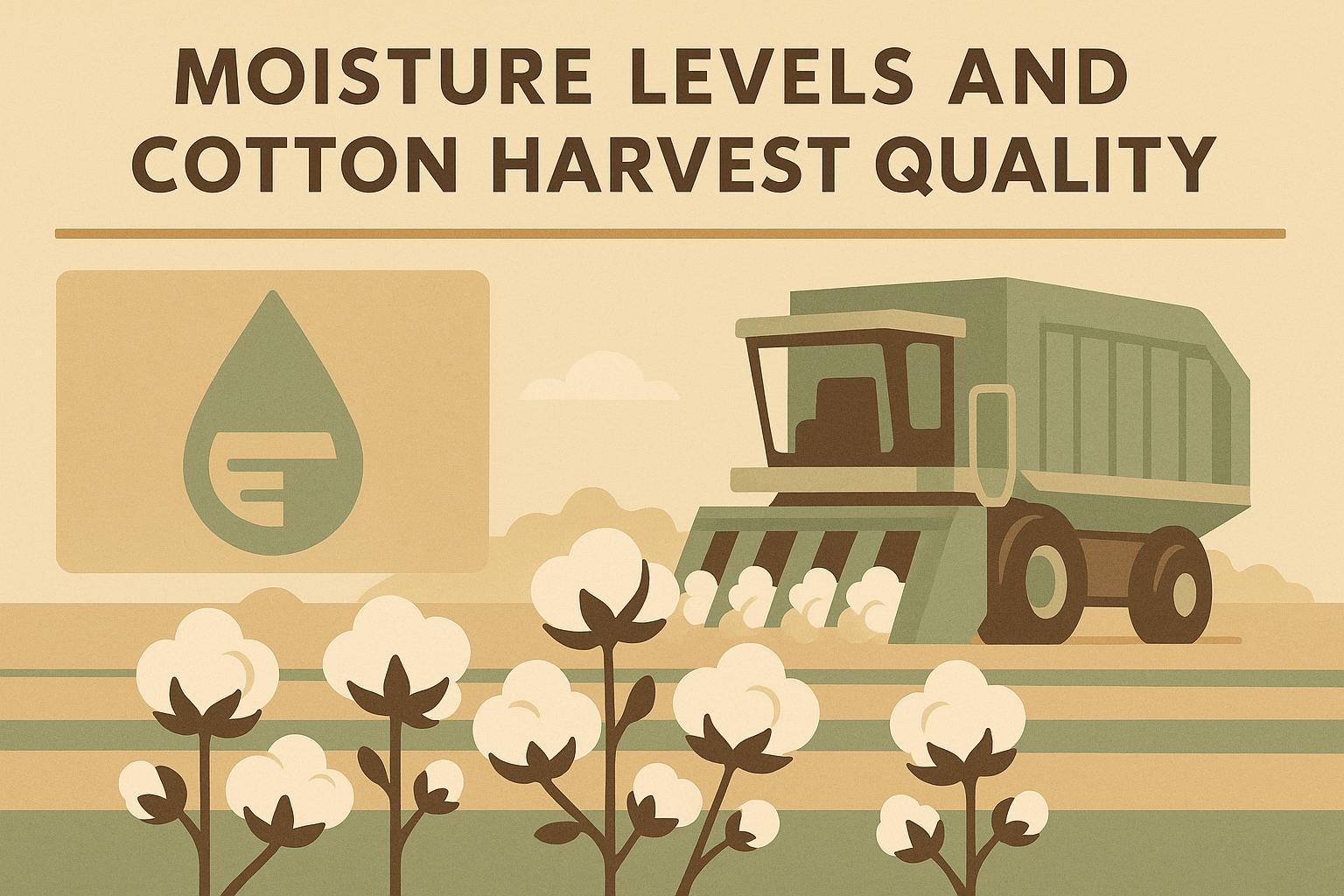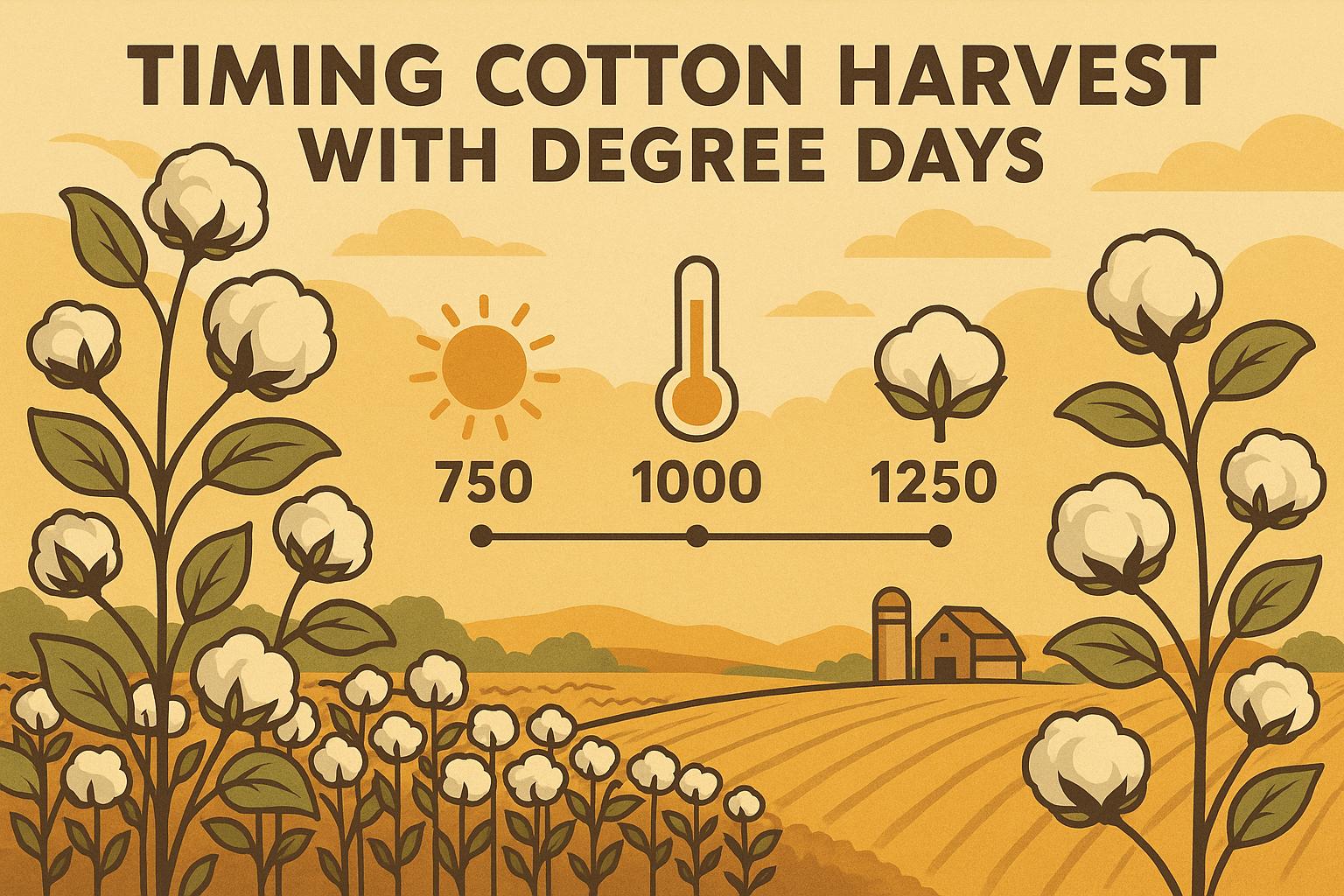Executive summary (TL;DR)
- Optimize cotton row spacing at 30-38 inches for balanced light penetration and air flow—boosts boll set by 10-15% in high-density fields without sacrificing fiber quality.
- Test twin-row configurations on sandy soils to cut erosion and increase population 20%; pair with variable-rate seeding for 8-12% yield gains over uniform setups.
- Monitor canopy closure weekly post-emergence; adjust for variety—wider rows for storm-proof types reduce lodging risks in windy regions.
Related Post: For related planting insights, check out our post on Cotton Precision Planting Techniques.
You know that feeling when you're staring at last season's yield maps, spotting those thin spots where the rows just didn't fill in right? Maybe you went too narrow and the canopy choked itself out, or too wide and weeds had a field day. After a decade or more wrestling with cotton, you've probably tweaked row spacing a time or two, chasing that sweet spot where plants compete just enough but not too much. It's not rocket science, but getting cotton row spacing practices dialed in can swing your yields 10-20% without dumping more inputs.
We're talking real-world tweaks here, the kind backed by extension trials from Texas A&M to the Delta. No need to recap basics—you've got your planters calibrated and varieties picked. This is about refining for your soil, climate, and setup, pulling from university data and what I've seen pay off in variable fields. Let's walk through the factors, configs, and metrics to make your rows work harder.
Why Row Spacing Still Trips Up Seasoned Growers
Row spacing isn't static—it's a lever for light, air, water, and competition. Go too narrow (under 30 inches), and you risk disease from poor ventilation; too wide (over 40), and you waste land with skips. A Mississippi State study pegged optimal at 36-38 inches for most Uplands, lifting lint by 150-200 lbs/acre via better boll retention.
But why revisit? Modern varieties with Bt and herbicide traits pack more potential, but they need space to branch. Plus, erosion, compaction, and drought stress change the game yearly. Get it wrong, and you're looking at 5-10% lodging or micronaire dips. Right, and canopy closes faster for weed suppression, cutting herbicide passes.
Soil Type: Your Starting Point for Spacing Decisions
Dirt dictates everything. Sandy loams drain fast but erode easy—narrower rows (30-36 inches) hold soil, per Oklahoma State data, reducing runoff 15-20%. Clays compact quick; wider (38-40 inches) eases traffic, avoiding root pruning.
Table from combined extension guidelines:
| Soil Type | Recommended Spacing | Why It Works | Potential Yield Bump |
|---|---|---|---|
| Sandy Loam | 30-36 inches | Better moisture retention, erosion control | 10-15% in dry years |
| Clay/Heavy | 38-40 inches | Improved aeration, less compaction | 8-12% reduced lodging |
| Silt Loam | 36-38 inches | Balanced light/air, weed suppression | 12-18% boll set |
| Irrigated | 30-34 inches | Higher density for water efficiency | 15-20% under pivot |
Test strips: Run 30, 36, 40-inch plots yearly—yield monitors tell the tale.
Variety Match: Spacing for Growth Habits
Storm-proof varieties bush out; wider rows (38+) prevent tangling. Determinate types pack tightly—narrow to 30 inches for population push. PhytoGen trials showed storm-resistants at 40 inches cut harvest loss 10%.
Bullet points for pairing:
- Bushy/Upright: 36-40 inches to avoid overlap.
- Early-Maturity: 30-34 inches for a quick canopy.
- High-Yield Potential: Test twin-row to amp density 15-20%.
- Disease-Prone: Wider for airflow, cutting Fusarium risk.
Population Plays: Density and Spacing Synergy
Spacing sets the stage; population fills it. Aim 2-4 plants/ft in 36-inch rows for 35,000-50,000/acre. Narrower? Bump to 45,000+ for competition edge. A North Carolina study: 30-inch at 50,000 plants lifted yields 12% over 40-inch at 30,000.
Variable-rate seeding shines—high zones narrow-effective via GPS. Saves 10% seed, per Kansas State.
Twin-Row Configurations: Worth the Switch?
Twin-rows (8-10 inches paired, 30-40 centers) boost density without narrow woes. Texas AgriLife: 15-25% yield gains on sands, better rooting. Drawbacks: Planter mods ($5K+), but ROI in 2-3 years via erosion cut.
When to try: Dryland, erodible soils. Scout for even emergence—uneven twins skip worse.
Irrigation Impacts: Spacing for Water Efficiency
Pivots love narrow (30-34 inches)—dense canopy conserves 10-15% water, per Arizona trials. Furrow? Wider (38+) avoids washout. Deficit irrigate? Narrow holds moisture longer.
Pro tip: Soil probes guide—keep 50% capacity V4-V8 for root push.
Weed and Disease Management Ties
Narrow rows close canopy fast, shading weeds—cuts pre-emerge needs 10-20%. But watch airflow; wider fights Fusarium/Verticillium. Integrate residuals like Warrant at-plant.
From UC IPM: 36-inch optimal balance—90% shade by bloom, disease under 5%.
Harvest and Quality Considerations
Narrower eases pickers—uniform maturity. Wider? Less tangling in wind-prone spots. Fiber: Balanced spacing holds micronaire 4.0-4.9; extremes dip strength.
Tech Tools for Spacing Optimization
Drones map variability—NDVI spots thin rows early. Apps model spacing/yield. Yield monitors refin next year.
Troubleshooting Common Spacing Pitfalls
Skips? Check depth/consistency. Lodging? Widen 2-4 inches. Weeds? Narrow, add covers.
Economics: Narrow saves land (5-10% more acres effective); wider cuts traffic costs.
I've seen ops switch to 36-inch twins, adding 200 lbs of lint—data-driven wins.
Actionable Takeaways
- Soil-test for 36-38 inch baseline; adjust 2-4 per type.
- Variety-match: Narrow bushy, widen determinate.
- Twin-row trial on 10% acres—monitor density/yield.
- Integrate VRT seeding; scout canopy weekly.


